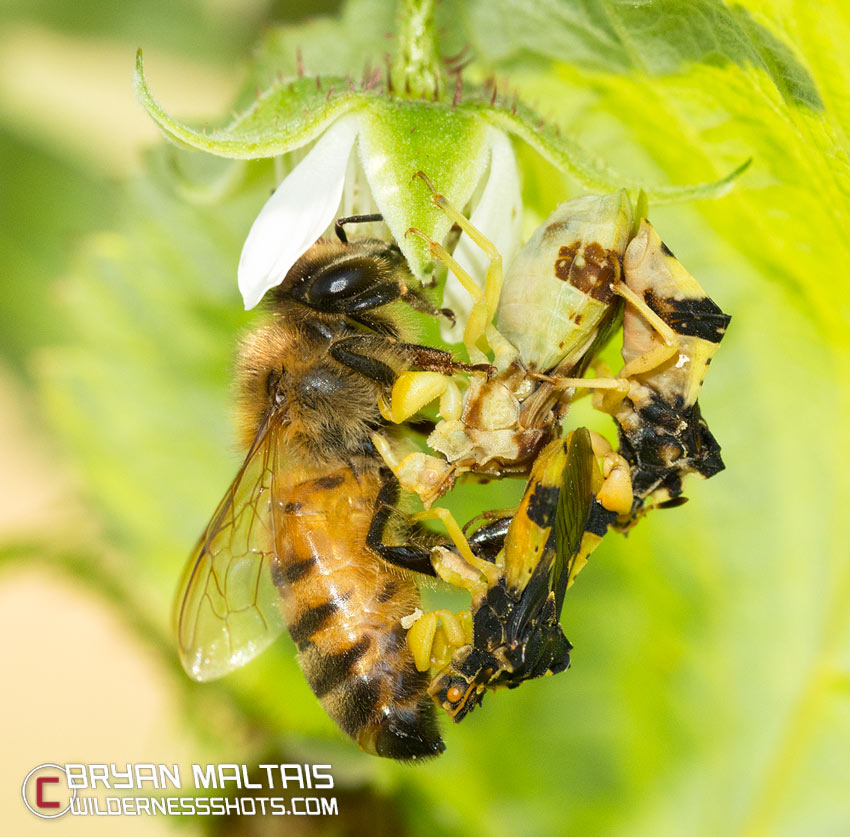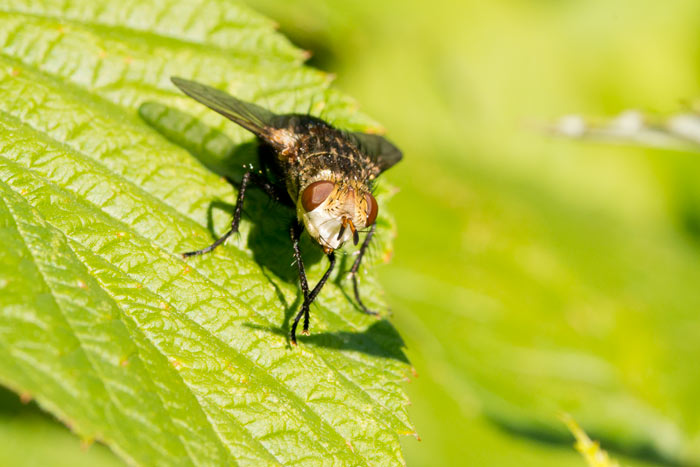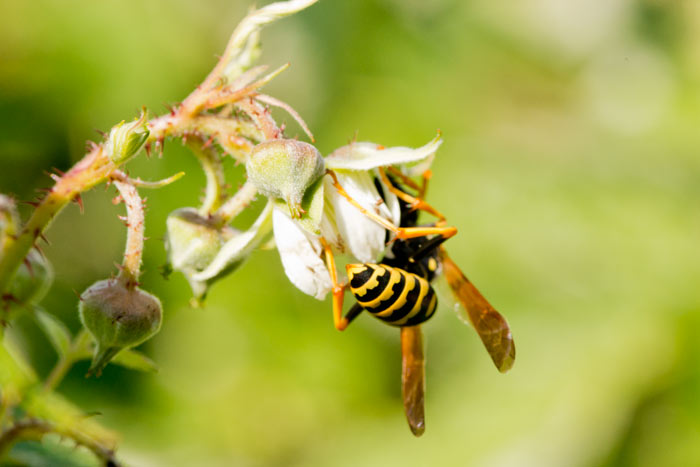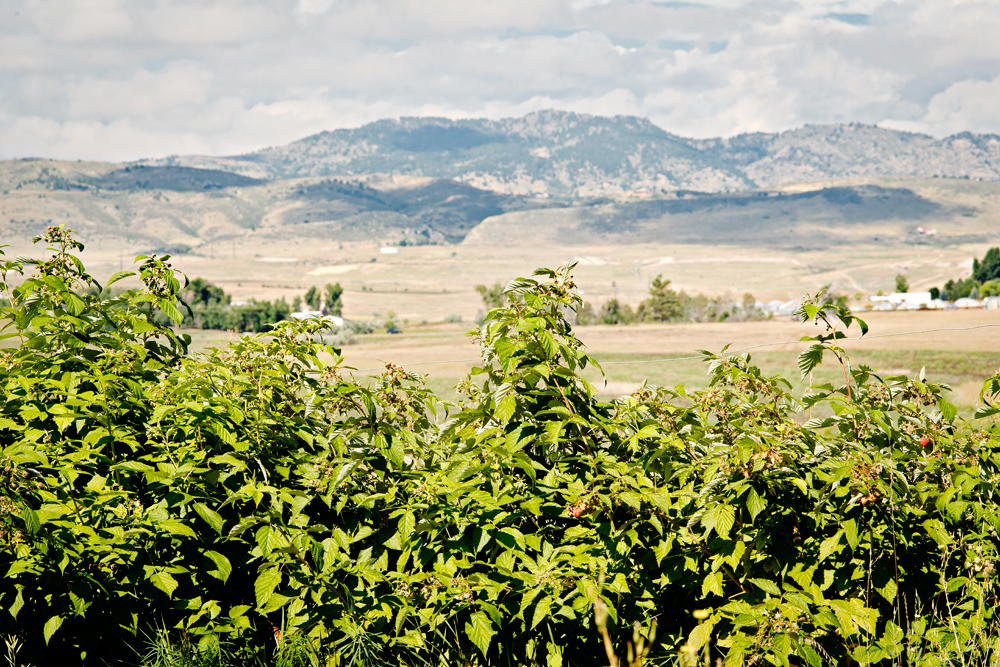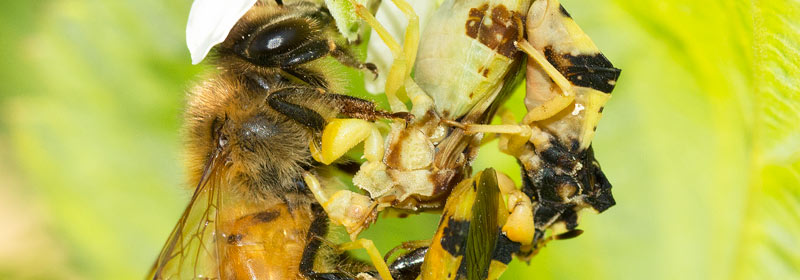
It’s difficult to discern what’s going on in this photo, but by human standards it would be considered perverse and macabre. It appears that a female Ambush Bug has skewered a Honey Bee with her piercing mouth part after it landed on a Raspberry blossom for a take of pollen, while she’s being mated with by two males. Apparently all that copulating worked up an appetite that not even heated romance could abate.
You’ll notice that her needle mouth is jabbed squarely into the Bee’s thorax, and the male Ambush Bug farthest forward has his fore-limbs hooked into the Bee’s abdomen.
Ambush Bugs lie in wait near flowers for other insects to land. They then capture the insect with their mantis-like forelegs and inject paralyzing saliva with a piercing mouth part. The same injecting mouth part is also a sucking straw, which they use to extract the juices of their prey. Mmm-Ovaltine good!
Ambush Bugs belong to a family fittingly called Assassin Bugs. They’re in the Order Hemiptera, the same group to which Stink Bugs belong. “Bug” is an often misused term applied to all insects and other Wee Beasties, but in fact “Bug” is the technical term for insects from the Hemiptera Order. I actually remember all this from Entomology class in college…finally, those 4 years of hard work have been justified by this blog.
I discovered this murder scene while picking breakfast in my Raspberry hedge, and noticed a Bee that hadn’t moved for a few seconds. Seemingly benign bushes, flowers and grass hide microcosms of insect activity upon closer inspection. My humble Raspberry hedge harbors dozens of pollinating insects, leaf-eating herbivores, and predators alike. Interestingly, most of my sweet plump berries remain intact. Ambush Bugs are generally welcome predators in my garden because, while they take the occasional bee, they also prey on caterpillars and aphids.
About the Photo
Lens: Nikon 105mm Macro (non-image stabilized), Camera: Nikon D800
It took a macro lens to focus this close. It’s also an extremely sharp lens.
Hand Held
These insects were several layers of foliage deep, so setting up a tripod would have shaken things up, and possibly scared the bugs off. The leaves were also swaying in the breeze, making the fixed focus point of a tripod impossible to use.
Aperture: F/16
The Depth of Field at this close focusing distance is so narrow that it took the small aperture of f/16 just to get most of the insects in focus. My own personal mantra: if I can’t get the eyes in focus, it’s not a usable shot.
ISO: 800
A higher ISO was necessary to be able to use a small Aperture and a fast enough Shutter Speed to freeze motion while hand-holding the camera. I could have used a faster Shutter Speed yet, but didn’t want the added noise of increasing to ISO 1600.
Shutter Speed: 1/250th sec
At such a close distance, the subject is greatly magnified, and so too is movement so I needed the fastest Shutter Speed possible to freeze the movement. In this case, ISO 800 dictated that I could use 1/250th sec. The normal rule of using a Shutter Speed number equal to lens focal length was not sufficient, and even at 1/250th I had to take several photos before I got a sharp one. Furthermore, 1/250th was my maximum flash sync speed.
Flash
I used the pop-up flash as fill light, not main illumination, because the scene was in shadow.

